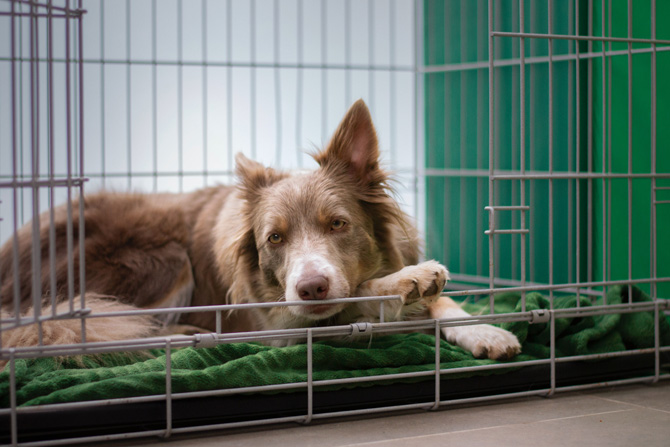Just like pet owners need to consider the safety of their pets in an emergency, you too need an emergency action plan.
Disaster can strike at any time. What if you’re caught up in a storm evacuation while you’re pet sitting? What if a fire breaks out in your veterinary practice? Having an emergency action plan in place will help ensure you, your staff, and your fur clients stay safe.
Key principles of an emergency action plan
June is National Pet Preparedness Month, so it’s a really good time to think about your business and to review your emergency preparations if, of course, you have any!
If you don’t have an emergency action plan, it’s the perfect time to think about what your plan should entail and why it’s an important thing to have.
Be it a cyclone, floods, bush fires or an act of terrorism, disaster can happen when we least expect it. Having an emergency action plan in place can help take away some of the stress and ensure the safety of those around you—be it staff, clients or animals.
Here’s a guide on some of the key things to consider when drawing up an emergency action plan.
Staff
Sure, it’s awesome if you know exactly what needs to be done in the event of an emergency. However, if you have staff (such as a veterinary practice or pet grooming salon), it’s essential that everyone knows what his or her role is.
Enlist the help of your staff and start a discussion about the roles that need undertaking and who is best placed to perform the job. Key considerations include:
- Who will be in charge of evacuating the animals?
- Has an emergency shelter been organised?
- Is someone in charge or contacting clients to update them on the safety and whereabouts of their pet?
- Has a person been nominated to keep in contact with the local authorities?
- Do you have an easy-to-grab list of who’s on duty at any given time?
- Has someone been assigned to evacuate staff and check everyone is accounted for?
- Has an evacuation point been identified and communicated to staff?
Animal safety
In the case of flooding or a fire, it’s likely any animals in your care will need to be transported to a place of safety. If you are pet-sitting a bunch of dogs or have 20 animals in your grooming salon, how will you safely move these pets?
You might need to consider keeping some crates or pet carriers on hand to help with the transportation. Likewise, what about vehicles? Is animal transportation a role that needs to be assigned to a certain number of employees?
Even if you are well prepared and fully equipped to transport several animals, where will you take them? Depending on the type of disaster, you may need both a nearby shelter and appropriate accommodation further afield.
Paperwork & policies
You may need to include some of the planned procedures in clients’ contracts, so they can give their agreement. Plus, you may need to add the temporary accommodation locations to your insurance policy. What happens if a pet gets injured while being transported or at an alternative location? These are all important considerations.
Talking of insurance, make sure you check what your policy covers and what’s not included. Does it cover interruptions to your business? Can you recoup the added cost to transport animals? Will you still have to pay rent if the business premises are not safe to work from?
When it comes to paperwork, you might like to think about how you store client details. For example, if you store paperwork in a filing cabinet how will you easily gather the contact details you need in an emergency?
If there were a fire, would you lose client details? Could you save important client information on a USB and save a copy at an alternative location?
Emergency kit
Should you need to evacuate, it’s important to have certain items on hand to ensure the health and welfare of animals and humans. Your emergency kit will depend on the type and size of the pet business you operate. A few key items you might include are:
- Leashes
- Muzzles
- Collars in different sizes
- Food bowls
- Food
- Water
- Flashlights
- Blankets
- Pet bedding
- Pet first aid kit
- Sanitation products (poop bags, disinfectant, clothes, gloves etc)
- Pet medication
To be honest, the list could go on and on. However, it’s essential to think about these things ahead of time, while you’re clear-headed and not under pressure.
Also, make sure someone is responsible for the emergency kit. This role may involve checking the quantities of products in the kit every few months or check nothing has been taken out. They might also rotate the stock to ensure the products are within the expiry date, if applicable. They will also be in charge of obtaining the emergency kit in the event of a disaster.
We can’t predict if or when a disaster will happen. However, having an emergency action plan is the best way to be prepared!
Have you got an emergency action plan for your pet business?
Image source: Ayla Verschueren on Unsplash
Latest posts by Liz Walden (see all)
- Pet health: Medicinal cannabis for pets - December 27, 2021
- What pet business insurance do I need? - November 17, 2021
- Pet sitters: how to take time off - November 15, 2021










Leave A Comment